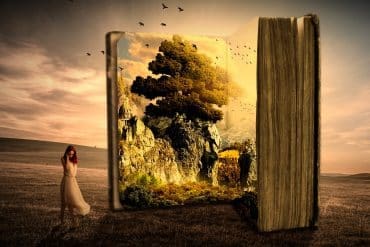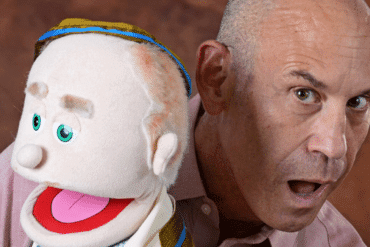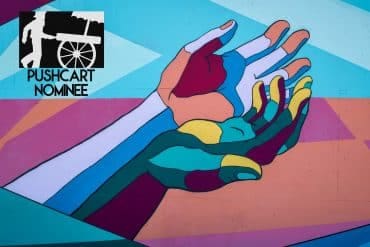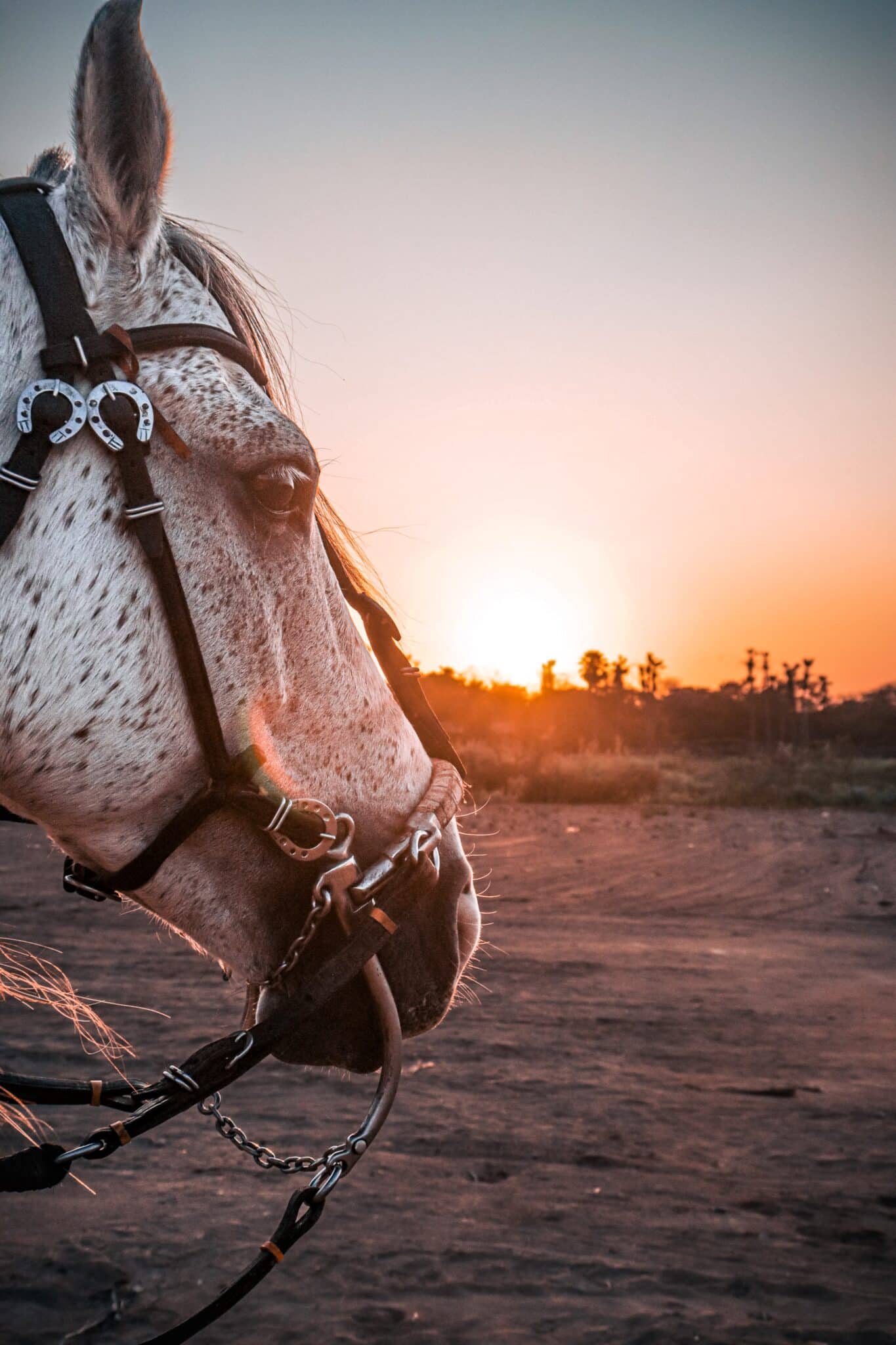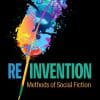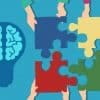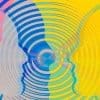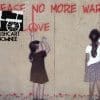Horse, Therapy: Trauma and Healing in Animals and Humans
Author’s Memo
“Horse, Therapy” is a story of my own experience and is a commentary on trauma, both in animals and humans. I collage together brief vignettes to create a picture of the therapeutic context. I envelop the story within the Greek myth of Persephone, which is what I named my rescue horse after learning her story of trauma.
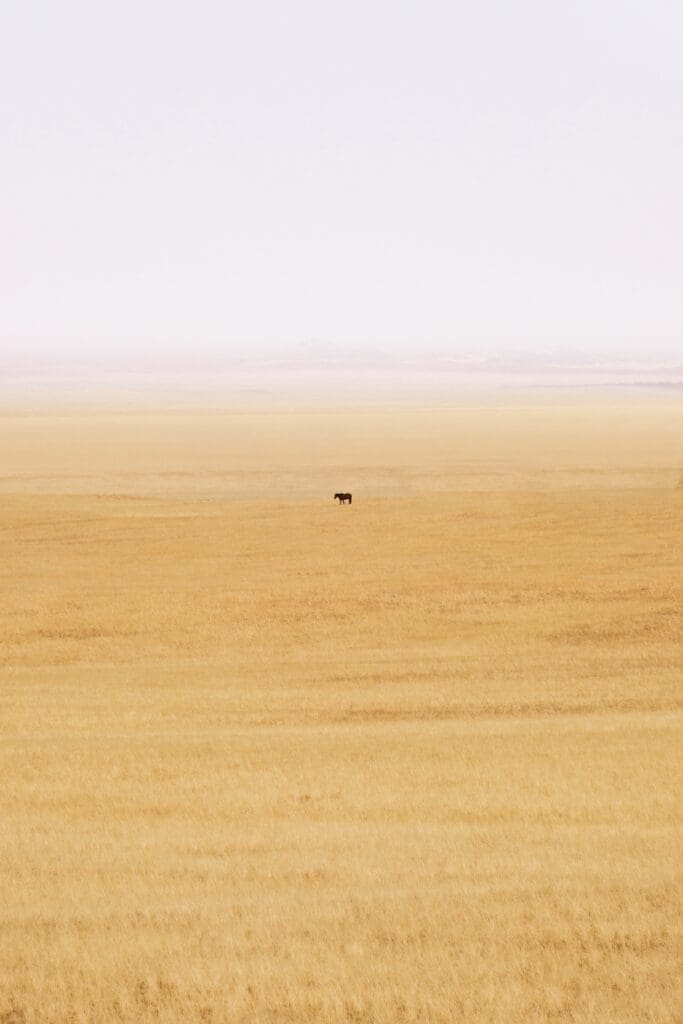
A Horse Alone on the Yellow Grass Field from Pexels by OP23 in Solitaire, Khomas, Namibia
Horse, Therapy
When the God of the Underworld laid his eyes on Persephone, he knew he wanted her for his bride. Her mother, Demeter, told Hades that he was not to have her. He drew Persephone’s attention with beautiful flowers, kidnapped her, and took her to his realm.
For my midlife crisis I decided to try horse therapy. Really, my motivation was more about wanting to pet horses than going to therapy, but it turned out my human therapist was wonderful.
The place I went to, Arabian Rescue Therapy, rescues both horses and humans. The horses are Arabians who have been rescued from kill pens or bad living situations. Most of them come from severe trauma. They are often underweight, even emaciated, with severe health conditions. Many are terrified of humans. Their rehabilitation is painstaking, but gentle.
Once the horses’ health stabilizes, they move to a pasture with a lot of human activity. This is where most of the human therapy takes place. The idea is to get the horses used to humans as nonthreatening, and for the humans to connect with the animals.
Sometimes, the horse and human make connections based on shared trauma, e.g. a neglected animal and a neglected child. A mare who lost a foal and a woman who miscarried. A horse easily spooked with a human with an anxiety disorder. In symbiosis, the horse and human heal each other.
My task is to put a halter on one of the three horses standing in the breezeway and leading her back to the therapist. I walk into the barn and pull a blue halter off the hook. It has a dirty white rope hanging from it. My hands shake; I worry I won’t be able to do this.
I move towards Bonnie, an elderly mare who is usually friendly and who I figure will be easiest to catch. I try to slip the halter over her nose but she turns and walks away from me. Kali pokes her head over my shoulder, curious about what I’m doing, and I slide the halter onto her. When I try to buckle it, I realize the halter is too small, and I latch it on the first hole.
They say a horse can hear your heart beating. Mine was beating fast. I lacked any confidence but I wanted to prove I could do the task.
I pull her head towards me and hope that she will follow me. She does. We walk over to the therapist.
“I saw that you started for Bonnie and then caught Kali. Why did you do that?”
“Kali was easier.”
“You had to get the task done.”
“Yes.”
“You are task oriented.”
“Yes.”
“What would have happened if you didn’t worry about the task and focused on Bonnie? What are you missing out on when you are hyperfocused on getting the job done?”
“At Arabian Rescue Therapy, you won’t find a high dollar pristine facility with a fancy barn or groomed ex-show horses living out their retirement. Instead, you will find a rough-shod, rustic farm held together with determination, ingenuity, and hope. Our shelters, fencing, and facilities are all made of recycled materials, reclaimed lumber, and volunteer effort. We take pride in this.
Our farm is a place where all are welcome, and where there is constant proof around you that perfection is not the goal – functionality is. Getting better is. Taking the broken and mending it, repairing it, or renewing it is what we do. Our horses are the same. More than half of the horses at ART are rescues, rehabs, or surrenders. These horses have come through the darkness and now share their light. They are not tools – nor are they gods or angels. They are living, breathing, sentient creatures with their own intelligence, and a way of connecting with human emotions that defies explanation. ART is unique, like every human that comes to us, and we aim to keep it that way.”1
When the God of the Underworld laid his eyes on Persephone, he knew he wanted her for his bride. Her mother, Demeter, told Hades that he was not to have her. He drew Persephone’s attention with beautiful flowers, kidnapped her, and took her to his realm.
A flea-bitten mare likes to rub her head against me. The therapist tells me the mare was alone in a large pasture for most of her life. She wore the same halter for ten years. It had worn away the hair and created sores in her skin. When she arrived at ART they had to cut it off of her. She doesn’t like to have her head touched; I am the only person she does this to. We bond over our loneliness.
Every weekend I go to horse therapy. I complain that I feel stuck, and worry about aging and being useless; I have anxiety and depression. Then I hold my hand out to the foals and let them sniff me. I scratch the mares. Sometimes I brush them. I tell the stallions how beautiful they are (they love this; stallions are quite arrogant). I feel better when I am there.
ART learned that they would be losing one of their large pastures. They had used the land for free, but the owner decided to sell the property. All of the horses moved across the road to the main facility.
There was not enough room. ART had to sell some of the animals.
I said I would buy one.
An elderly couple owned the black mare, but they could no longer take care of her. They gave her to an acquaintance, who assured that she would be in good hands. Instead, he sold her at auction to the owner of a kill pen.
The kill pen is a racket. They look for rescue organizations to rescue (buy) the horses, under the threat that any not rescued will be shipped to Mexico for slaughter. Under threat of grinding them into dog food.
Another family rescued the mare.
Time passed and once again her caretakers decided they could not care for her. Once again it was auction time. Once again to the kill pen.
When Arabian Horse Therapy found her, she was skin and bones. It took seven months to stabilize her health.
Twice she descended into hell.
Twice she survived.
Persephone arrived to our property on a hot summer afternoon. She walked out of the trailer, her ears perked up in interest. I scratched her and hugged her. In the pasture, she pranced with her tail held high.
“Equine Assisted Psychotherapy (EAP) incorporates horses experientially for mental and behavioral health therapy and personal development. It is a collaborative effort between a licensed therapist and a horse professional working with the clients and horses to address treatment goals. Because of its intensity and effectiveness, EAP is a short-term, or “brief” approach.
EAP is experiential in nature. This means that participants learn about themselves and others by participating in activities with the horses, and then processing (or discussing) feelings, behaviors, and patterns.”2
Three donkeys share the pasture with Persephone. At first she does not like them. She is food aggressive, and feeding the four of them is challenging because she will eat all their food. We finally find a solution, but she remains aggressive to everyone at feeding time.
I tell her I will not take away her food.
I tell her she can have all the hay she wants.
Her ribs begin to disappear as she puts on weight.
The sharp angle of her hip rounds out.
I talk to her and brush her. Some days she stands relaxed, one hind leg cocked, her eyes soft, and occasionally she sighs. We are both content. Some days she pins her ears back to her neck when I approach, warning me away. Those are days we don’t connect. Sometimes I feel sad when she does this. It tweaks my depression to think my therapy horse might not like me. Some days she walks up to me at the fence and breathes in my scent. Some days she follows me around the pen. These are good days for both of us.
One way to bond with your horse is to lead them out to the field and be with them while they graze. I decided this was an excellent idea. I would take her out of her pen over to the thick grass of the pasture where the farmer who used to own this property farmed hay. Emerald stalks that rolled in the wind like an ocean. She and I would laze about in the sun. It would be the perfect day.
Sometimes connections are made based on shared trauma. A neglected animal and someone who was neglected as a child. A mare who lost a foal and a woman who miscarried. A horse easily spooked with a human with an anxiety disorder. In symbiosis, the horse and human heal each other.
Her ears perked up as I led her out of the gate. I walked her to the pasture, fighting to keep her from running. She ate a few bites, walked around excited, every muscle tense. The more she tensed up, the more afraid I became. She ate a few more bites and started to trot; I kept up with her, concerned she might start to canter. She stopped. Ate a few bites. Turned her nose to the wind and whinnied.
Something caught her attention and she bolted. I gripped the rope. As I fell I thought to myself, this is going to hurt. And it did.
For a few moments I couldn’t inhale. I lay face down in a ditch. I tried to sit up, but I couldn’t. So, I lay down and felt the cool dirt on my face.
I’m not sure who called 911.
The EMT asked, “Are you on any medications?”
I began to list the litany of psychological pharmaceuticals I take daily. “This is my therapy horse,” I said.
Over and over they ask me, “Why didn’t you let go?”
“Because I’m a moron?”
When a human is about to be in a car wreck, they grab ahold of something. They know something bad is about to happen and they grip whatever they can to stabilize themselves and brace for impact. The human instinct is to hold on tighter.
Persephone’s previous traumatic experiences and instinct told her to run. Meanwhile my instinct was to not lose my horse and to brace myself. I gripped the rope automatically, which is what people naturally do unless they have trained themselves to let go.
Turns out the horse trainer trains the human more than the animal.
Because of the trauma Persephone had been through, it is better that I have a light grip on her lead. If she bolts, I wouldn’t be able to stop her anyway – she weighs close to a thousand pounds. It would be safer to let go of the rope, let her run, and then calm her down and catch her.
I’m still a little afraid of walking her.
They cut off my clothes in the emergency room. My favorite jeans and favorite shirt. Twelve thousand dollars worth of imaging and no one scanned my hands to see the torn ligaments in my fingers. They did find the concussion. Everyone said I was lucky.
We spend time every day being in the same space. I hire a trainer to help me learn how to better interact with her. And I hire a farrier and learn that Persephone has an old hip injury and probably is not rideable. I hire a vet; I don’t like the way he interacts with her so I hire a different vet. Then I buy hay. And I buy more hay. Every week I buy hay. Every two weeks I buy a bag of feed. The people at the feedstore know me now.
Persephone and I like to hang out with each other. When other people come around, she looks to me for input. Some days she tries to boss me around. Some days I am confident with her. Every day we heal each other.
I have Persephone on a lead. It’s taken a while since the accident for me to want to attempt it. We walk to the center of the pen. I step away from her, to lunge her. She stands still. She looks at me. I look at her. Neither of us knows what to do next. I walk back to her and scratch her on her neck and we walk back to the barn. Today is a good day.
Persephone is the Goddess of both Nature and the Underworld. When she leaves the Underworld, the fields bloom.
1 https://arabianrescuetherapy.org/Mission-Statement.php
2 https://arabianrescuetherapy.org/equine-therapy.php
Featured image by Junior Souza for Pexels | The AutoEthnographer
Jessica Smartt Gullion, PhD, is Associate Dean of Research for the College of Arts and Sciences at Texas Woman’s University. She is also Professor of Sociology and Affiliate Faculty of Multicultural Women’s and Gender Studies. She teaches a variety of courses on qualitative research methods. She has published more than 35 peer-reviewed journal articles and book chapters. Her writing has appeared in such journals as the International Review of Qualitative Research, the Journal of Applied Social Science, and Qualitative Inquiry. Her essays and Op-Eds have appeared in a variety of outlets, including Newsweek, The Conversation, Alternet, and Inside Higher Ed, and she is regularly quoted by national media. Her books include: Doing Ethnography (forthcoming); Qualitative Research in Health and Illness (forthcoming); Researching With: A Decolonizing Approach to Community-Based Action Research; Diffractive Ethnography: Social Science and the Ontological Turn; Writing Ethnography; Fracking the Neighborhood: Reluctant Activists and Natural Gas Drilling; October Birds: A Novel about Pandemic Influenza, Infection Control, and First Responders; Redefining Disability; In Sickness and in Health: Sociological Perspectives on Healthcare;and Voices in Sociology: An Introduction to the Core Concepts.


